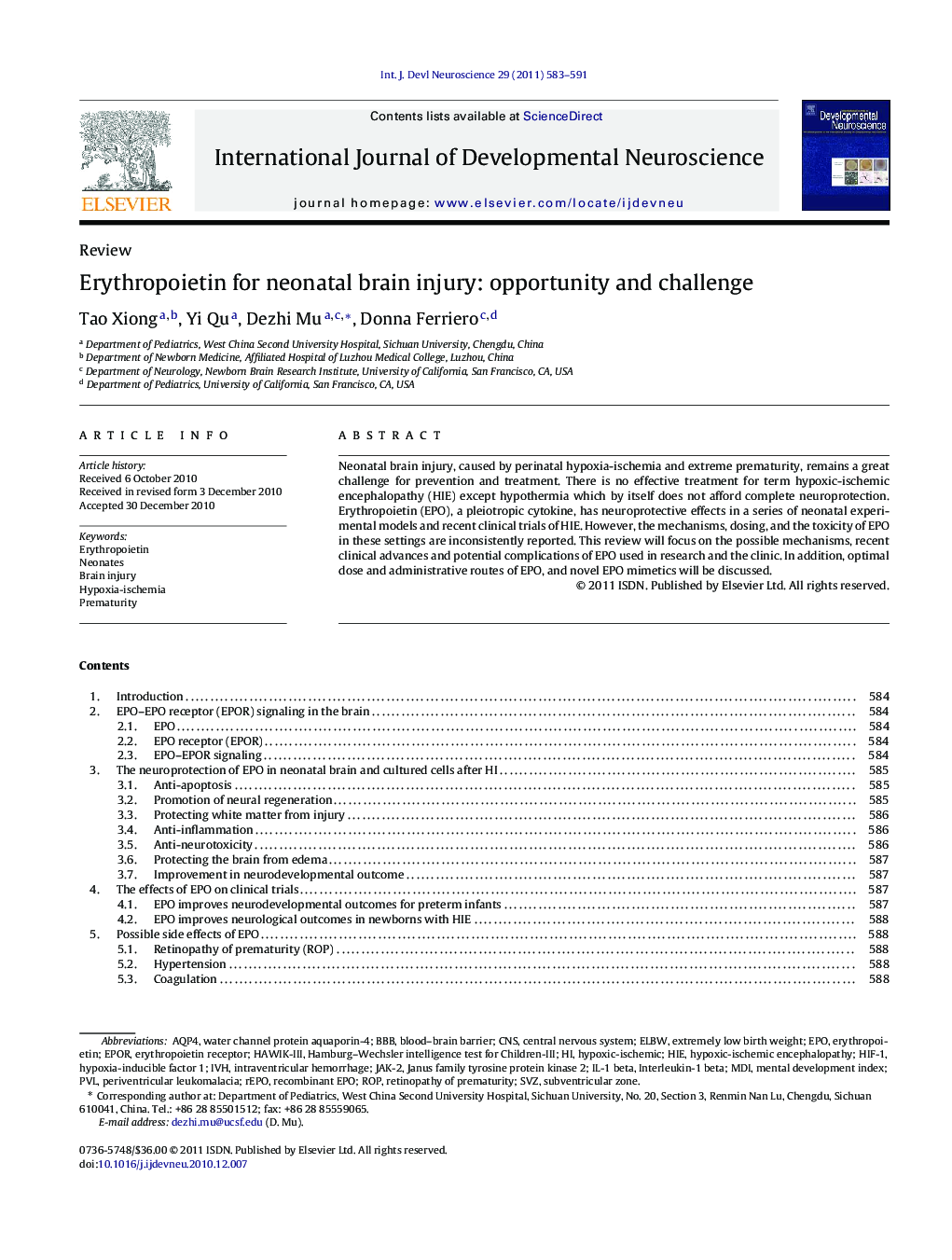| Article ID | Journal | Published Year | Pages | File Type |
|---|---|---|---|---|
| 2786482 | International Journal of Developmental Neuroscience | 2011 | 9 Pages |
Neonatal brain injury, caused by perinatal hypoxia-ischemia and extreme prematurity, remains a great challenge for prevention and treatment. There is no effective treatment for term hypoxic-ischemic encephalopathy (HIE) except hypothermia which by itself does not afford complete neuroprotection. Erythropoietin (EPO), a pleiotropic cytokine, has neuroprotective effects in a series of neonatal experimental models and recent clinical trials of HIE. However, the mechanisms, dosing, and the toxicity of EPO in these settings are inconsistently reported. This review will focus on the possible mechanisms, recent clinical advances and potential complications of EPO used in research and the clinic. In addition, optimal dose and administrative routes of EPO, and novel EPO mimetics will be discussed.
Research highlights► This review systematically discusses the recent advances regarding the use of erythropoietin (EPO) for neuroprotection both in the clinic and at the bench. ► The mechanisms of EPO neuroprotection in the setting of premature birth and term hypoxic-ischemic encephalopathy are elaborated upon and clarified. ► The potential side effects, optimal dose, administrative routes and novel EPO mimetics are discussed.
